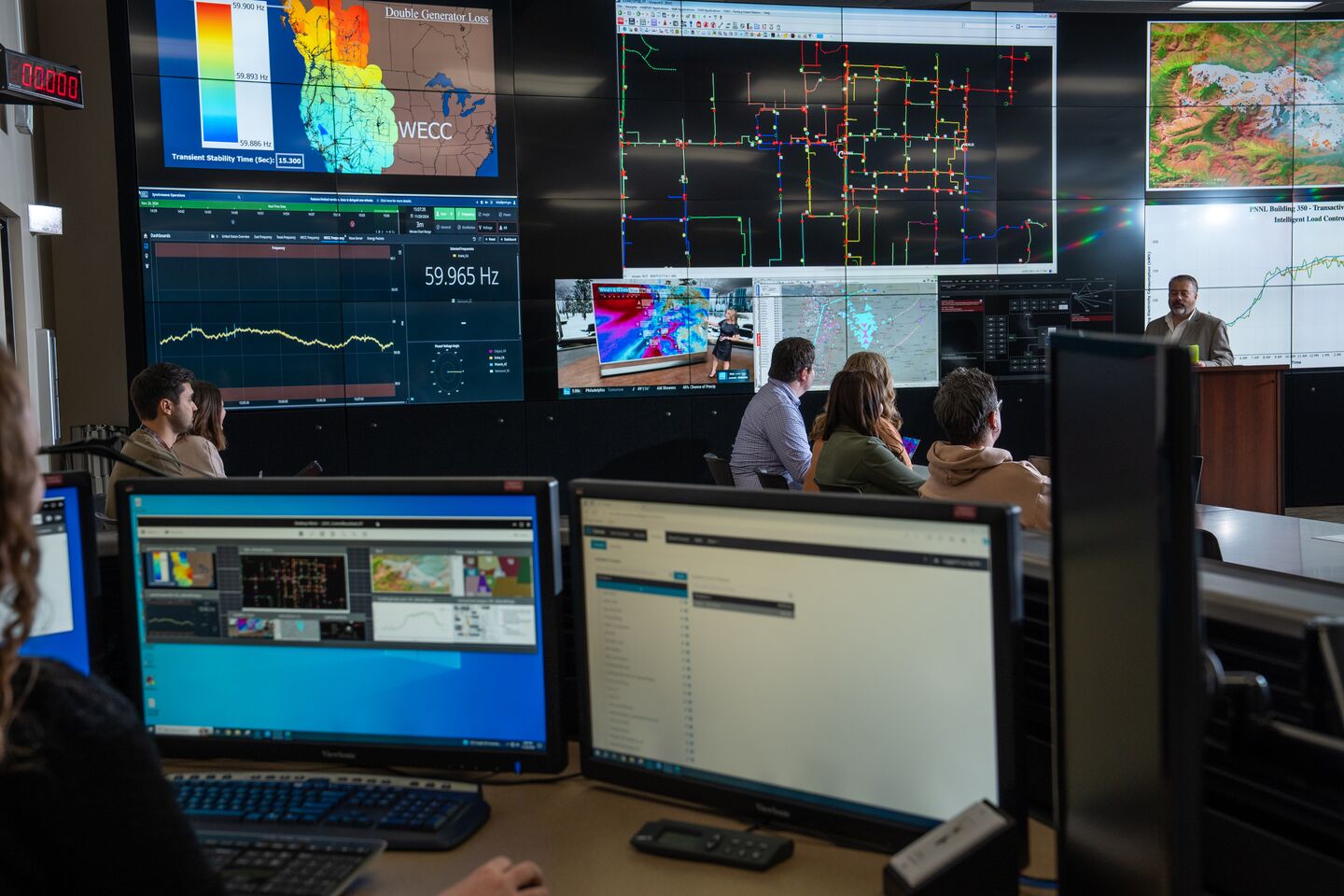Electricity Infrastructure Operations Center
Where Innovation Meets Real-World Grid Operations

Where Innovation Meets Real-World Grid Operations

The Electricity Infrastructure Operations Center (EIOC) at the Pacific Northwest National Laboratory (PNNL)-Richland campus is where the electric grid meets the future. Shaped with input from both industry and the research community, the EIOC serves as a valuable resource and testing ground for utilities, vendors, national laboratories, government agencies and universities interested in grid-related research and development, education, and training.
The EIOC consists of two fully functional, configurable control rooms that mirror real-world grid operations—from generation and transmission to distribution, buildings, and end use loads—with customizable network security and cyberoperations. Each control room comes equipped with industry-leading software, real utility data, and advanced computing capabilities.

Learn more about what the EIOC has to offer.
Built around utility systems and workflows, the EIOC is a realistic operations environment where researchers can develop and test new technologies for managing the power grid. The EIOC is used to simulate end-to-end operations and see how incremental and localized changes affect other parts of the grid. Through better understanding of the real-time operating environment, the EIOC delivers technologies that help grid operators, power system engineers, and other users better respond to grid events, forecast conditions with confidence, and plan for an increasingly dynamic and distributed system. As the grid grows more complex, the EIOC serves as a hub for innovation that supports a modern, reliable, secure, and affordable power grid.
The grid is evolving rapidly, and the technologies used to manage operations are advancing in response. Grid operators and dispatchers require the right tools, computational power, data, and training to manage a dynamic energy landscape effectively. The EIOC is dedicated to building the “Control Room of the Future” by assessing current state-of-the-art technologies and projected trends, exploring innovative approaches, and advancing the technology pipeline for grid management and control. This includes identifying evaluation requirements for emerging technologies to enable safe, secure, and high-performance deployment.